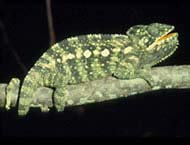Articles and reports from the Life Sciences and chemistry area deal with applied and basic research into modern biology, chemistry and human medicine.
Valuable information can be found on a range of life sciences fields including bacteriology, biochemistry, bionics, bioinformatics, biophysics, biotechnology, genetics, geobotany, human biology, marine biology, microbiology, molecular biology, cellular biology, zoology, bioinorganic chemistry, microchemistry and environmental chemistry.

Two techniques may help deduce proteins’ functions.
Imagine trying to guess what machines do just be looking at them. Even a can-opener would pose problems, if you didn’t know about cans. This is the challenge that faces molecular biologists as they try to make sense of protein molecules in the cell.
Two new techniques may help. One deduces a protein’s function from its shape; the other deduces its shape from a list of component parts 1 , 2 .

ATTO-TEC® has developed the second generation of fluorescent dyes which are stable at room temperature for more than six months.
With Atto 520, Atto 565 and Atto 590 we are pleased to offer three stable fluorescent dyes as amine-reactive succinimidyl esters which will be available from November 2001 on. This allows researchers an easy handling for selectively target- labeling by linking a fluorophore to primary amine groups on proteins or modified nucleic acids.
Further stable activate

Chemists build molecules by paring them down
Complex molecules, such as many drugs, can be fiddly to assemble. By binding their starting compounds in chains 1 , chemists in Denmark may have found a way speed the automated chemical synthesis of such complicated products.
Les Miranda and Morten Meldal of Carlsberg University in Copenhagen have solved the following problem. Complex molecules are usually built up from a core with several near-identical hooks on w

Chameleons can reel in prey anywhere within two-and-a-half body lengths of their jaws. Their tongues can overcome even a bird’s weight and reluctance to be eaten. How? Muscles that are unique among backboned animals, researchers now reveal.
Anthony Herrel of the University of Antwerp, Belgium, and colleagues put crickets at different distances from the noses of two chameleon species, Chameleo calyptratus and Chameleo oustaletti. The tongues of these 12-cm-long reptiles pull at maximum stren

Chemists copy bacterial tricks for making clean fuel.
Bacteria are teaching chemists their tips for creating lean, green fuel. US researchers have developed a catalyst based on a bacterial enzyme that converts cheap acids to hydrogen, the ultimate clean power source.
Unlike other fuels, hydrogen is non-polluting: its combustion makes only water, instead of greenhouse gas carbon dioxide or the poison carbon monoxide. Thomas Rauchfuss and colleagues at the University of Illino

Sequencers expose secret chromosome centre.
February’s celebrations hid a dark secret: the human genome sequencers hadn’t touched the hearts of our chromosomes. Now, at last, one chromosome’s inscrutable midpoint, its centromere, has given up its genetic secrets.
Centromeres look like the ’waist’ in an X. They share out chromosomes fairly when a cell divides. Defective centromeres may underlie many cancers, in which problems with chromosome movement